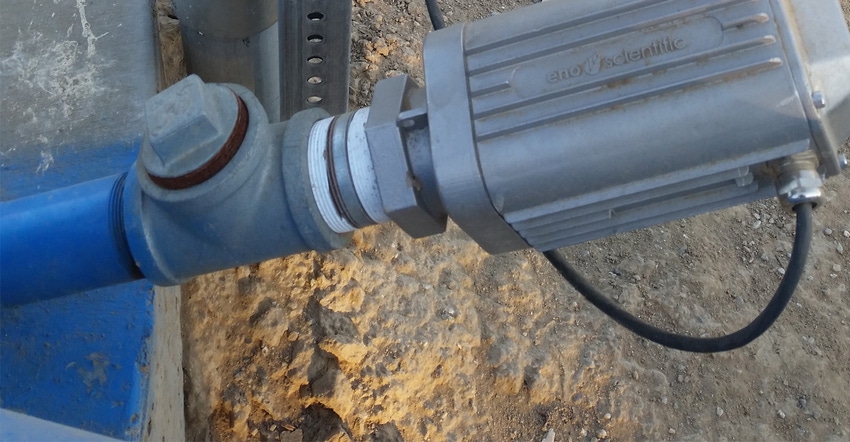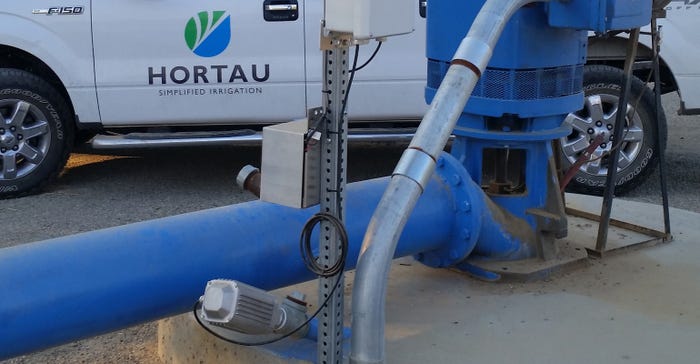
What could be done if it were possible to measure total water drawdown at the aquifer level in real time?
California-based Hortau has offered real-time soil tension monitoring to farmers and ranchers since the early 2000s. Earlier this year, Hortau began offering real-time flowmeter and well monitoring by partnering with Eno Scientific to integrate Hortau telemetry systems with Eno Scientific's Well Watch 700 series sonic water level indicator, as well as various flowmeters.
 REAL-TIME MONITORING: Hortau now offers real-time flowmeter and well monitoring by integrating Eno Scientific's Well Watch 700 water level indicators, shown here mounted to an access tube, with Hortau's telemetry, as well as various kinds of flowmeters.
REAL-TIME MONITORING: Hortau now offers real-time flowmeter and well monitoring by integrating Eno Scientific's Well Watch 700 water level indicators, shown here mounted to an access tube, with Hortau's telemetry, as well as various kinds of flowmeters.

Doug Larson, regional sales manager and director of OEM partnerships at Hortau, notes the system works by installing a Well Watch 700 series directly on the irrigation well. The indicator uses a cellular connection to send updates to a smartphone or tablet with the Hortau app installed.
What does a sonic water level indicator do? "It's sonic-based. One of the barriers to well management is the additional cost to measure deeper wells. For other types of well monitoring solutions, there can be variable increases in cost to place a pressure transducer at the bottom of deeper wells," Larson says. "The Well Watch 700 is a sonic device, and uses acoustic pulses to measure water levels, so it doesn't cost more for a deeper well. It's standardized pricing, so no matter what type of well it is, we can help with that solution."
Hortau's bread and butter is sensors that use soil tension to measure soil moisture levels — also known as tensiometers. Integrating telemetry with these sensors has provided irrigators with real-time updates on soil moisture levels to help with irrigation scheduling and variable-rate irrigation prescriptions. So, integrating these real-time soil tension measurements of the soil water profile with real-time well and flowmeter monitoring was the next logical step.
"It allows us to find anomalies ahead of time. If we see spiking, we should become aware that something needs some extra attention. For the most part, other than startup and shutdown, we should see fairly consistent levels," he adds. "This will allow us to see what's happening in real time with the flowmeters as they fluctuate up and down. It helps us identify those anomalies out there and help figure out whatever countermeasures we need to initiate."
However, the biggest benefit, Larson says, is the potential to monitor well drawdowns and water level changes locally, as well as across a given watershed or aquifer in real-time and then manage it.
"That's the piece that's really revolutionary. We can see the changes in those basins at any particular moment. As we start studying basins, seeing what happens in real-time, and put it together with soil moisture monitoring, it really could be groundbreaking," he says. "The truth is we often don't know in real time what's taking place. We have an understanding long term what we think is going on and why certain basins are affected in certain ways, but to identify in real time what's happening is amazing."
The cost for the system includes an initial installation fee for the Well Watch 700, as well as an annual subscription fee for the telemetry tool. To learn more or to check on specific rates, contact Larson at [email protected].
About the Author(s)
You May Also Like






